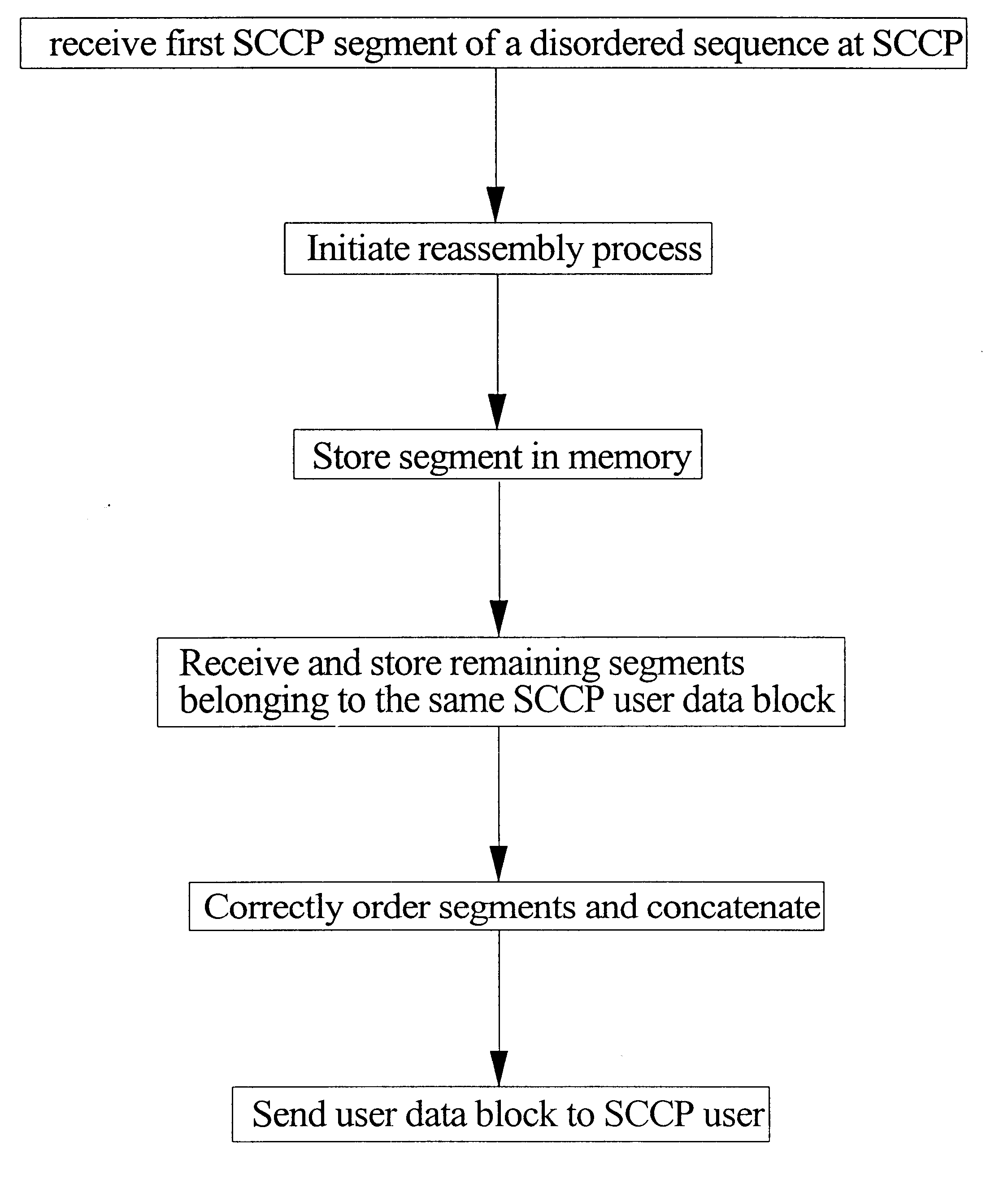Signalling in a telecommunications network
a telecommunications network and signalling technology, applied in the field of signalling in a telecommunications network, can solve the problems and the problem of sccp segments arriving at a destination node out of sequen
- Summary
- Abstract
- Description
- Claims
- Application Information
AI Technical Summary
Problems solved by technology
Method used
Image
Examples
Embodiment Construction
The various layers of an SS7 protocol stack have been described above with reference to FIG. 1. The process to be described below relates to a modification of the SCCP of the SS7 stack and more particularly to a modification which allows the SCCP at a destination signalling node to correctly reassemble a segmented SCCP user data block even if the individual segments of the message are received out of order at the destination node.
FIG. 2 illustrates schematically a signalling network 1 of an overall telecommunications network in which a pair of signalling nodes 2,3 are coupled to enable signalling traffic to be transferred between the nodes 2,3. Each of the nodes 2,3 is provided with an SS7 protocol stack (see FIG. 1) to enable the nodes to transfer data between the signalling network and various different application and user parts. Each of the signalling nodes 2,3 is coupled to an SS7 / IP gateway 4,5 which provide an interface between the SS7 nodes 2,3 and an IP network 6. The gatew...
PUM
 Login to View More
Login to View More Abstract
Description
Claims
Application Information
 Login to View More
Login to View More - R&D
- Intellectual Property
- Life Sciences
- Materials
- Tech Scout
- Unparalleled Data Quality
- Higher Quality Content
- 60% Fewer Hallucinations
Browse by: Latest US Patents, China's latest patents, Technical Efficacy Thesaurus, Application Domain, Technology Topic, Popular Technical Reports.
© 2025 PatSnap. All rights reserved.Legal|Privacy policy|Modern Slavery Act Transparency Statement|Sitemap|About US| Contact US: help@patsnap.com



